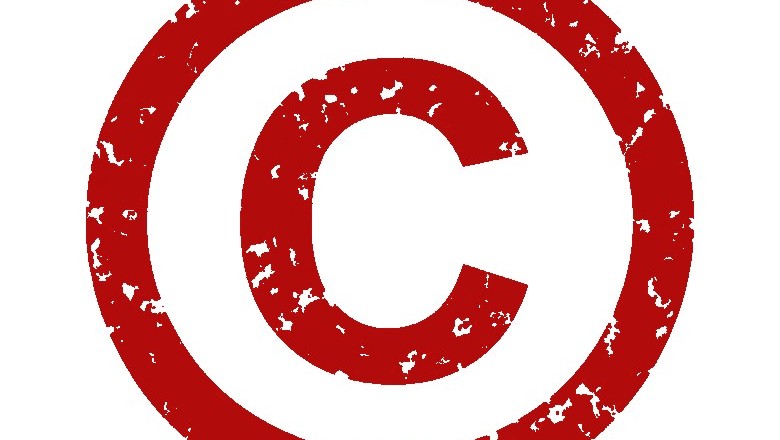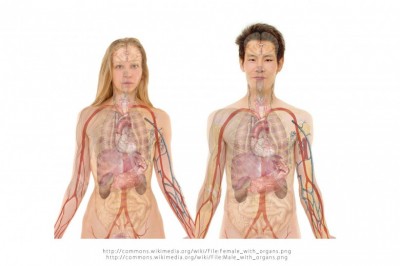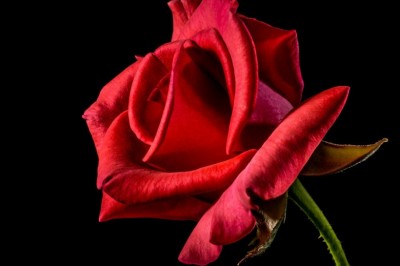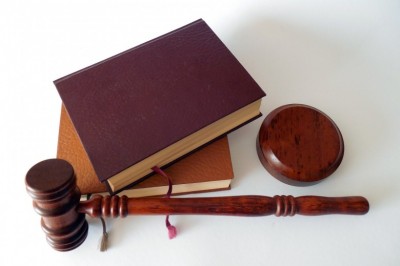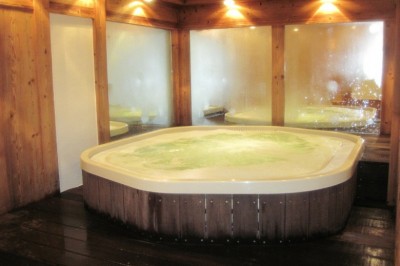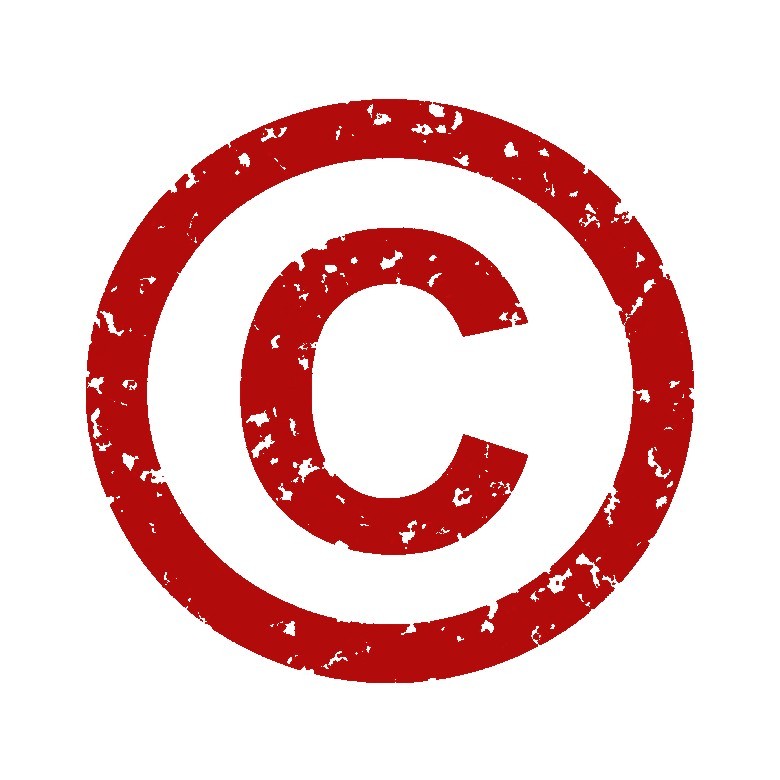
Trademark Infringement: The Basics
A trademark is an identifier-a "word, name, symbol, device," or some combination thereof-that informs consumers of the source of particular goods, distinguishing one merchants goods from those manufactured or sold by another. 15 U.S.C. Section 1127. It may be associated with a standard of quality, and it symbolizes the goodwill built up in a product. The public relies on trademarks to more efficiently evaluate options in a market that would otherwise be riddled with uncertainty.
A problem arises, however, when an "infringer" creates or uses a trademark that is identical or confusingly similar to anothers legally established mark. This is known as "palming off" or "passing off," and historically the courts were concerned because such infringement was considered a morally reprehensible act the focus was accordingly on the improper intent of the defendant. 4 McCarthy on Trademarks and Unfair Competition Section 25:1 (4th ed.). Today, given the enormous breadth of the marketplace, bad faith is often absent when someone concocts a near-copycat identifier to help market her goods. In keeping with this growth of the marketplace, the law has evolved and now focuses on the effect on the public. Today, the concern with the use of an infringing mark is that the public in the relevant market may be misled or deceived as to the origin of a good, and the value of the goodwill built up in the mark may be diminished. If use of a similar identifier is thus likely to confuse or deceive the public, then a trademark owner may have a claim for "infringement." 15 U.S.C. Sections 1114, 1125(a).
This article introduces the basic elements of a federal cause of action for infringement of registered and unregistered trademarks though the principles apply equally to a claim for infringement of a service mark. See American Intl Group, Inc. v. American Intl Bank, 926 F.2d 829, 830 n. 1 (9th Cir.1991). (A service mark serves the same function as a trademark, but for services rather than goods, and it is entitled to the same protection as is a trademark.) A related federal claim for trademark "dilution" may also be available if use of a nearly identical mark is likely to lessen or "dilute" the goodwill value built up in a famous mark. [Authors Note: Dilution will be discussed in a future article.]
Elements of a Federal Infringement Claim The U.S. Congress has crafted a series of rules to protect trademarks from counterfeiting, infringement and dilution. These are embodied in the Lanham Act, codified at 15 U.S.C. Sections 1051, et seq. The Lanham Act was written to unify pre-existing federal law both legislative and court-made on trademarks to eliminate conflicts and to make ferreting out and stopping infringement fast and effective.
The federal civil cause of action for trademark infringement is provided for in Sections 32 and 43(a) of the Lanham Act. 15 U.S.C. Sections 1114 and 1125(a)(2002). Section 32 lays out the requirements and remedies for a claim of infringement of a registered mark. Section 43(a), technically, lays out a claim for "unfair competition." It has been read, however, to permit a like infringement claim by the owner of an unregistered, but substantively valid, mark. Two Pesos v. Taco Cabana, 505 U.S. 763, 768, 112 S. Ct. 275, 120 L. Ed. 2d 615, (1992) (Section 43(a) "prohibits a broader range of practices than does Section 32, which applies to registered marksbut it is common ground that Section 43(a) protects qualifying unregistered trademarks.") (citation omitted).
To prove infringement of a mark pursuant to the Lanham Act, a claimant must demonstrate the following:
1. it owns a valid mark mark, i.e., the mark, registered or not, is entitled to protection;
2. the defendant is using the mark, or a confusingly similar mark, in commerce;
3. without permission;
4. the defendants use of the mark in commerce is likely to cause confusion, mistake or deception as to who actually is the source of either the plaintiffs or the defendants products; and
5. the defendant has no valid defense.
15 U.S.C. Section 1114(a); and see, e.g., Two Pesos v. Taco Cabana, 505 U.S. at 768;
GoTo.com, Inc. v. Walt Disney Co., 202 F.3d 1199, 1205 (9th Cir. 2000).
Someone whose mark has been infringed may also have claims for unfair competition under the Lanham Act (15 U.S.C. Section 1125(b)), or for state statutory or common law infringement and in practice these claims are often raised together. State legislation and common law rules protecting from infringement generally offer similar protections and remedies and require similar proof as does the federal law. See e.g., Don Alvarado Co. v. Porganan, 203 Cal. App. 2d 377, 382 (Cal. Ct. App. 1962) (under California unfair competition and trademark law, "it is enough that an appreciable number of purchasers are likely to bemisled" by a "confusingly similar" mark); Mattel, Inc. v. MCA Records, Inc., 28 F.Supp.2d 1120, 1144 n. 30 (C.D.Cal.1998) (citations omitted), affd, 296 F.3d 894 (9th Cir.2002), cert. denied, 537 U.S. 1171, 123 S.Ct. 993, 154 L.Ed.2d 912 (2003) (to establish a state law trademark infringement or state law unfair competition claim, the plaintiff must meet the "likelihood of confusion" test applicable in federal trademark infringement claims).
Ownership of the Mark A valid mark is the sine qua non of any infringement case. KP Permanent Make-Up, Inc. v. Lasting Impression I, Inc., 408 F.3d 596, 602 (9th Cir. 2005) (setting forth that "[b]efore infringement can be shown, the trademark holder must demonstrate that it owns a valid mark, and thus a protectable interest"). Under the Lanham Act, a marks validity can be proved by evidence that it: (1) is registered, or (2) is eligible for registration based on its nature and prior use.
Validity Based on Registration Registration of a mark creates a presumption that it is legitimate and eligible for protection under the Lanham Act. In courtroom parlance, this means it is deemed "prima facie" evidence of the "ownership" prong of the infringement test. 15 U.S.C. Section 1065. The federal Certificate of Registration will establish the validity of the mark, its registration, and the registrants ownership and exclusive right to use the mark in commerce. 15 U.S.C. Sections 1057(b) and 1115(a).
Even when a plaintiff has proved that it registered a mark, however, the defendant may still challenge the registrants supremacy by pointing up a defect in the registration or by raising another objection, or "affirmative defense." This might include a charge that the registration was obtained fraudulently. Or, that the allegedly infringing mark was the first mark to be legally "used," at least in a particular region. 15 U.S.C. Section 1115(b) (listing eight categories of defenses to the presumption created by the fact of plaintiffs registration).
Protectability of an Unregistered Mark The foundation of trademark protection historically is that someone gains an interest in a trademark because he uses that mark, not because he registers it with the federal government. Sengoku Works v. RMC Intl, 96 F.3d 1217, 1219 (9th Cir. 1996). The Lanham Act thus ensures that an unregistered mark can also be protected against infringement. But a plaintiff seeking to establish that her unregistered mark has been infringed is not given the benefit of a presumption in her favor, and so faces a tougher battle. Before she can even claim her mark was infringed, an unregistered mark holder must first prove, by a preponderance of the evidence, (1) that her mark was actually "used" in commerce and (2) that it meets the general requirements of being a trademark under Section 2 of the Lanham Act. E.g., Two Pesos v. Taco Cabana, 505 U.S. at 768.
Proving "use in commerce" is straight-forward. The "use" need not be nationwide interstate use is sufficient to bring the mark within the ambit of federal protection. CarX Subx Service Systems, Inc. v. Exxon Corp., 215 U.S.P.Q. 345, 350 (T.T.A.B. 1982). Indeed, as one commentator has suggested, given the nature of todays marketplace there is almost no use of a mark that could not be viewed as being "in commerce." 4 McCarthy on Trademarks and Unfair Competition Section 25:57 (4th ed.) The use must be more than a token use, though. The linchpin is whether it was commercial use "of the type common to the particular industry in question." Chance v. Pac-Tel Teletrac Inc., 242 F.3d 1151, 1157 (9th Cir. 2001). For an unregistered mark to satisfy the second prong of the test that it rises to the same level of validity of a registered mark a plaintiff must prove that the mark can, in fact, distinguish its product from anothers product. Identifiers that are simply geographic designations, surnames, descriptive terms, grade or style designations cannot alone distinguish one source of goods from another, and so do not fit the bill. This means that a mark must either be "inherently distinctive" or, if merely descriptive, have acquired "secondary meaning" in the market. Wal-Mart Stores, Inc. v. Samara Bros., 529 U.S. 205, 210-211, 120 S. Ct. 1339, 146 L. Ed. 2d 182 (2000).
The Second Circuit developed the classic test courts use to determine whether a mark particularly a word mark is "inherently distinctive." Under this test, a mark that is "arbitrary (Camel cigarettes), fanciful (Kodak film), or even merely suggestive (Tide laundry detergent)" rises to the level of a trademark. Abercrombie & Fitch Co. v. Hunting World, Inc., 537 F.2d 4, 10-11 (2d Cir. 1976).
Whether a descriptive identifier has acquired "secondary meaning" and become a trademark depends on how the public perceives it. A mark has acquired "secondary meaning" when the public believes that the marks "primary significanceis to identify the source of the product rather than the product itself." Inwood Laboratories, Inc. v. Ives Laboratories, Inc., 456 U.S. 844, 851, n. 11, 72 L. Ed. 2d 606, 102 S. Ct. 2182 (1982) (emphasis added).
A "Likelihood of Confusion" by the Buying Public The crux of a claim for trademark infringement and the battleground on which most infringement disputes are fought is whether there exists a "likelihood of confusion" between two marks. See, e.g.,
GoTo.com, Inc. v. Walt Disney Co., 202 F.3d 1199, 1205 (9th Cir. 2000); G. Leblanc Corp. v. H. & A. Selmer, Inc., 310 F.2d 449, 457 (7th Cir. 1962).
Determining whether the public would likely be confused by a second mark can be a tricky inquiry. As the United States Supreme Court wrote more than a century ago:
What degree of resemblance is necessary to constitute an infringement is incapable of exact definition, as applicable to all cases. All that courts of justice can do, in that regard, is to say that no trader can adopt a trademark, so resembling that of another trader, as that ordinary purchasers, buying with ordinary caution, are likely to be misled.
McLean v. Fleming, 96 U.S. 245, 251, 24 L. Ed. 828, 1877 U.S. LEXIS 1659 (1877). What is clear is that a "likelihood" of confusion must be something more than a mere possibility there must be something more like a "probability" of confusion. Rodeo Collection, Ltd. v. West Seventh, 812 F.2d 1215, 1217 (9th Cir.1987)."
To make it easier for courts to evaluate when an ordinary purchaser would probably or likely be misled by a mark, the federal courts have developed a multi-factored test. While some circuits have articulated one more or fewer factors, following are the most commonly cited factors:
1. The strength of the plaintiffs mark,
2. The degree of similarity of the marks, in sound, appearance and meaning,
3. The degree of similarity of the products,
4. Whether the products are actually competitive, or the degree to which they overlap in trade channels and territories,
5. The relative sophistication of the buyers, or the likely degree of purchaser care,
6. The intent or good faith of the defendants creation or use of the mark, i.e., did the defendant intend to palm off his goods as if they were the plaintiffs;
7. Evidence of actual confusion.
See, e.g., AFM, Inc. v. Sleekcraft Boats, 599 F.2d 341, 348-349 (9th Cir. 1979); Sullivan v. CBS Corp., 385 F.3d 772, 776 (7th Cir. 2004); Polaroid Corp. v. Polarad Elecs. Corp., 287 F.2d 492, 495 (2d Cir. 1961).
This test is fluid. The plaintiff need not prove every single factor, or even a majority of them, if a strong showing is made with respect to some. See Dreamwerks Prod. Group, Inc. v. SKG Studio, 142 F.3d 1127, 1129-30, 1132 (9th Cir.1998) (allowing case to proceed to trial where plaintiff overwhelmingly satisfied only three of these factors). In other words, as the Ninth Circuit aptly put it, "we do not count beans." Id., 142 F.3d at 1132. So, for example, if the holders mark is weak, but the two marks are quite similar and the goods closely related, a court will still find infringement. AMF, Inc. v. Sleekcraft Boats, 599 F.2d 341, 350 (9th Cir. 1979) (discussing breadth of each factor).
Of course, some factors for example, the similarity of the marks and whether the services directly compete may weigh more heavily than others. Dreamwerks, 142 F.3d at 1130-32. Indeed, evidence of intent alone can conclusively decide the question of "likely confusion." That is, if there is evidence that the defendant knowingly created or used a confusing mark to pass off an inferior good for a superior one, the courts will presume that she could accomplish her purpose and deceive the public. Entrepreneur Media, Inc. v. Smith, 279 F.3d 1135, 1149 (9th Cir. 2002) ("the alleged infringers judgment as to what is likely to be confusing is relevant because it may well be accurate") (citations omitted). This is the closest scenario to the traditional tort of "palming off." The classic example is the Coca-Cola cases, in which a restaurant substitutes another product in response to a request for Coke or Coca-Cola . 4 McCarthy on Trademarks and Unfair Competition Section 25:3 (4th ed.) (compiling cases).
Reverse Confusion Someone whose mark has suffered from so-called "reverse confusion" is equally eligible for trademark protection. "Reverse confusion" happens when a small business, that has been using a mark on a relatively small scale, is effectively beaten out of its market when a much larger business subsequently begins using a similar mark on a large scale. If the public comes to believe that plaintiffs product originates with the defendant, the plaintiff has a cause of action for reverse confusion. See, e.g., Patsys Brand, Inc. v. I.O.B. Realty, Inc., 317 F.3d 209 (2d Cir. 2003), "Reverse Confusion Doctrine Under Lanham Trademark Act," 187 A.L.R. Fed. 271 (2003).
Lack of Permission Someone cannot prohibit a use of her mark that she expressly condoned. So, the Lanham Act requires that infringement be found only when there was use without the permission of the mark holder. For the most part, this is a straight-forward inquiry.
Complications arise, though, when the defendant is a licensee, franchisee or dealer who was, originally at least, hired to produce or sell some goods with the plaintiffs permission. The courts have viewed these cases strictly, and generally find that any use of the mark that exceeds the narrow scope of the original license constitutes infringement. So, for example, what if a license is silent on what to do with a surplus of a product, and a franchisee sells surplus goods without removing the owners mark? This constitutes infringement; because a use that is not expressly provided for is forbidden. 4 McCarthy on Trademarks and Unfair Competition Section 25:30 (4th ed.)(citations omitted). Likewise, continued use of a mark after a license expires "holding over" is infringement. As the Eleventh Circuit put it: "Common sense compels the conclusion that a strong risk of consumer confusion arises when a terminated franchisee continues to use the former franchisors trademarks." Burger King Corp. v. Mason, 710 F.2d 1480 (11th Cir. 1983), cert. denied, 465 U.S. 1102, 80 L. Ed. 2d 130, 104 S. Ct. 1599 (1984).
Creation or Use of the Deceptively Similar Mark The Lanham Act provides that anyone who "uses" or "creates" an infringing mark can be liable for infringement. 15 U.S.C. Section 1114. This means that any member of the manufacturing and distribution chain of an infringing product can be sued for trademark infringement. Id.; Restatement (Third) of Unfair Competition Section 26 (1995).
Someone who knowingly sells supplies to and assists another in producing copycat goods is, of course, liable for infringement. But even "innocent infringers" in the chain can be liable. Innocent infringers are those who may have simply manufactured, packaged, printed or labeled the goods at the behest of someone else, without knowledge that something about the item bore a confusing similarity to a mark already in commerce. "The reason for this is clear: if potential purchasers are confused, no amount of good faith can make them less so." Fuji Photo Film v. Shinohara Shoji Kabushiki Kaisha, 754 F.2d 591, 596 (5th Cir.1985), rehg denied, 761 F.2d 695.
The most commonly encountered "innocent infringer" is a retailer, who has sold the goods at the behest of another, without knowledge of a confusing similarity. It is no defense that someone else created the mark, or made the product that bears the infringing mark. Someone who sells a product that bears an infringing mark is using it in commerce and is liable for trademark infringement, even if acting in good faith. Id. El Greco Leather Products Co., Inc. v. Shoe World, Inc., 806 F.2d 392, 396(2d Cir. 1986), (defendant liable for infringement even though it was an innocent retailer which purchased seemingly genuine goods in good faith without any apparent knowledge of the fact that the source of the goods was a private label manufacturer whose authorization to put the trademark on the goods had been revoked by the trademark proprietor); Polo Fashions, Inc. v. Fernandez, 655 F. Supp. 664, 667 (D.P.R. 1987)(defendant retailer liable trademark infringement though it made every effort to verify that goods were not counterfeit, and upon learning they were immediately withdrew its remaining stock from sale).
As the Lanham Act makes clear, though, in the case of an innocent infringement, money damages may, in some cases, be precluded and the plaintiff may be limited to an injunction stopping future infringement. 15 U.S.C. Section 1114(2). [Authors Note: Monetary damages and other remedies will be discussed in a future article.]
**This article is for informational purposes only. This article does not constitute legal advice, and no attorney-client relationship exists between its reader and Zuber & Taillieu LLP or any of its attorneys. If you seek legal advice in a particular matter, you should seek the counsel of a lawyer experienced in the relevant area of law, rendered with the lawyers full knowledge of the facts relevant to such matter.
------
Jeffrey J. Zuber is a partner of
Zuber & Taillieu LLP. He specializes in
trademarkand other types of litigation.



